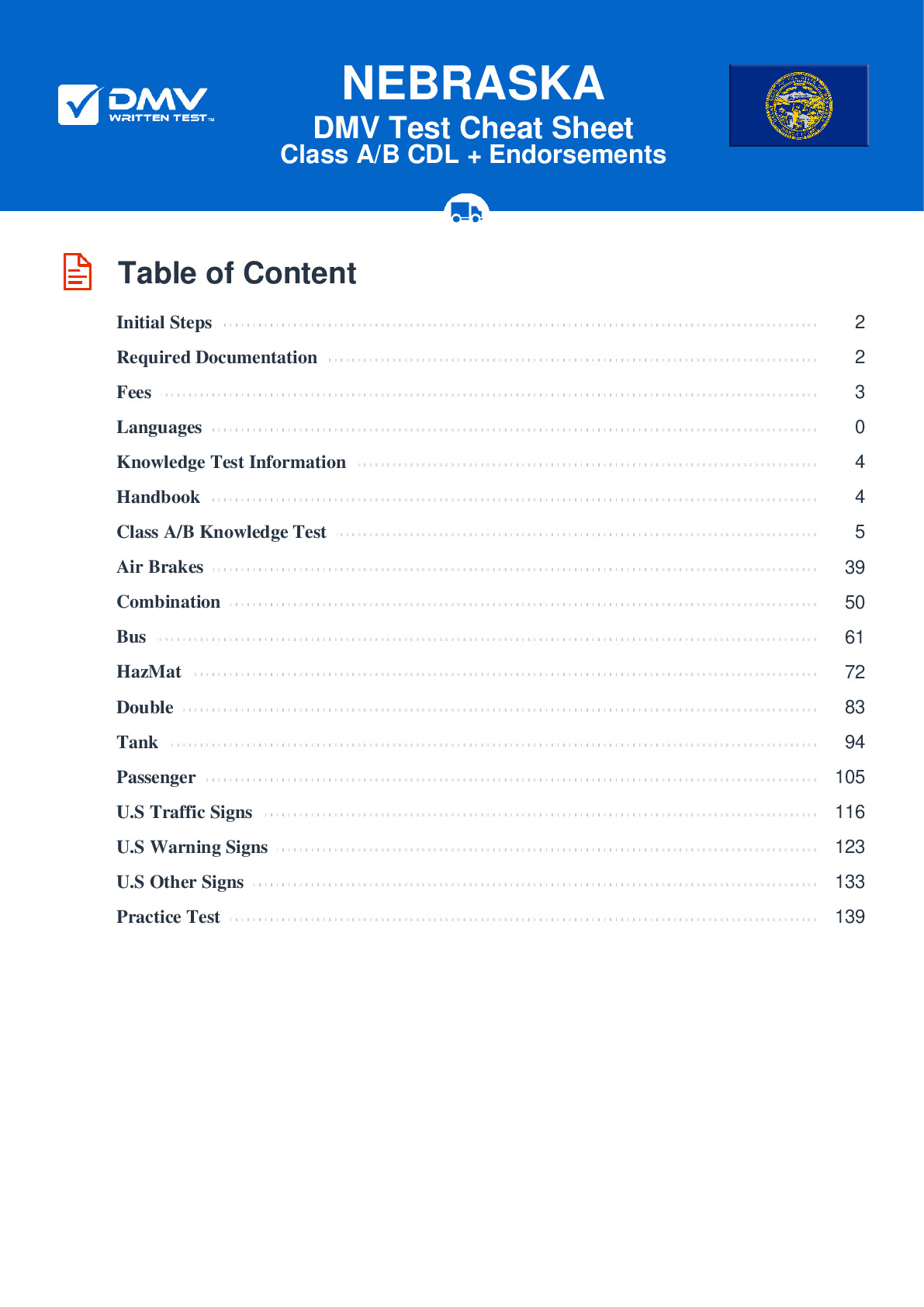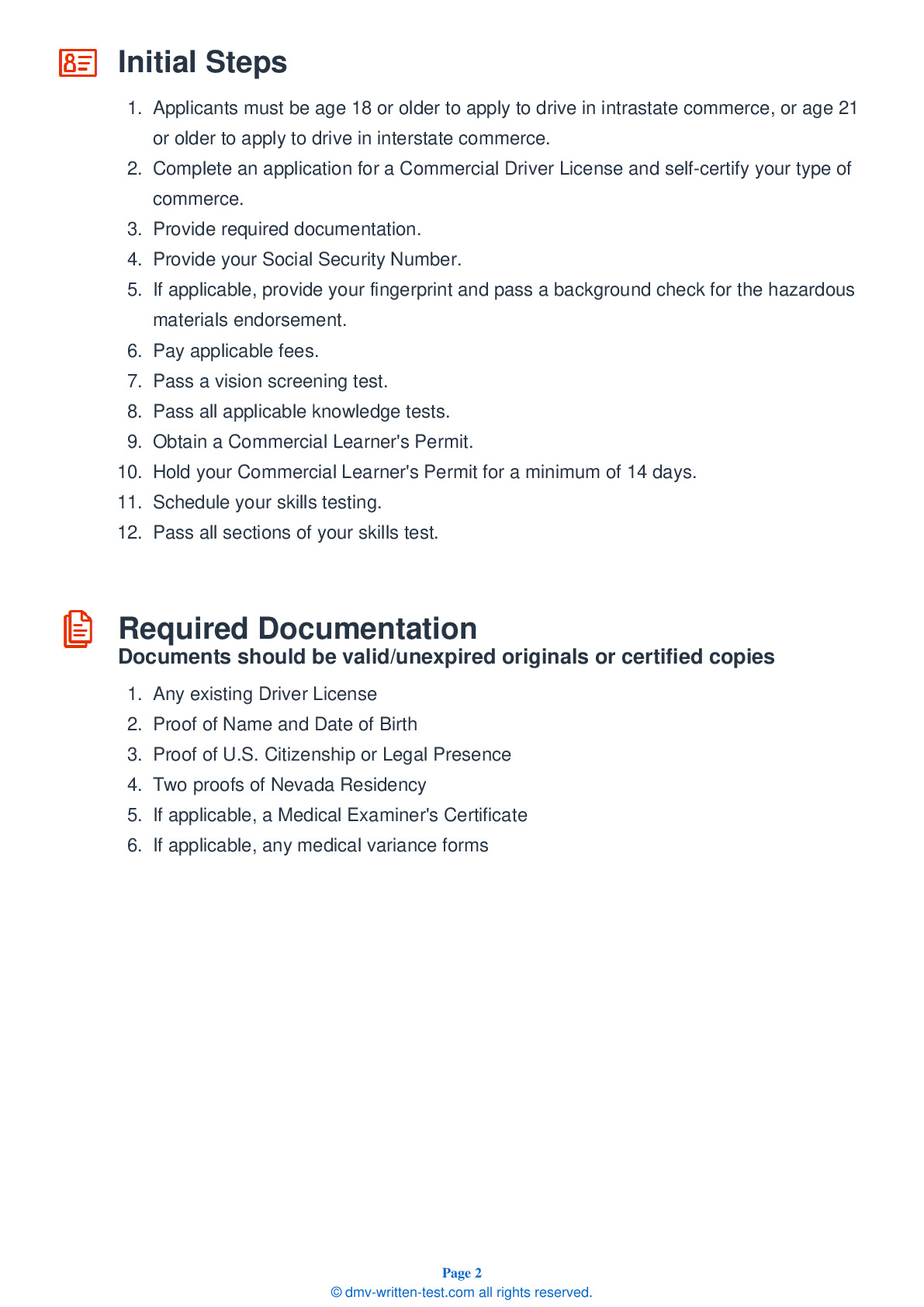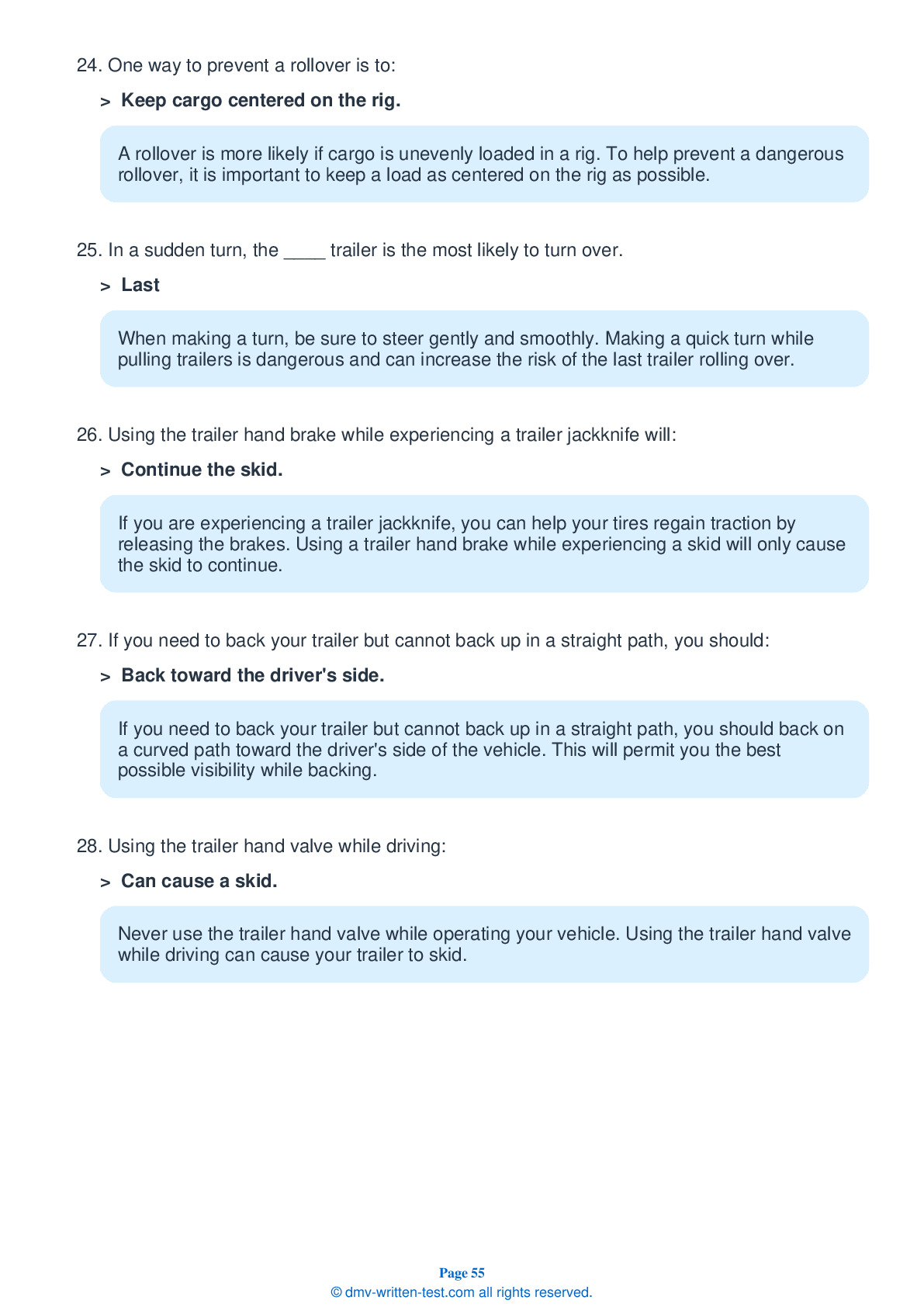Air Brakes
This endorsement is required for driving a vehicle with air brakes. To receive this endorsement, applicants must pass a written test. The test consists of 25 multiple choice questions. Each question has two, three or four answer choices. To pass, the applicant must answer at least 20 questions correctly. Test questions come from the Nebraska Commercial Driver License Manual. Questions come from the chapter covering: Air Brakes. The Air Brakes endorsement may be used with the Class A, B or C CDL.
Number of Question
Passing Score
19. Front brake limiting valves were intended to:
Explanation
Some older vehicles with air brakes have front brake limiting valves. These valves were intended to reduce the risk of front wheels skidding. However, research has shown that such devices are unnecessary, so they should be left in the "normal" position.
20. Air tank drains:
Explanation
Compressed air in an air brake system usually contains a certain amount of water and compressor oil. The water and oil can damage the brakes if left to accumulate in the system. Manually operated air tank drains must be opened daily to remove this build-up.
21. If the low air pressure warning signal comes on, you should:
Explanation
If the low air pressure warning signal comes on while you are driving a vehicle with air brakes, you should immediately bring the vehicle to a safe stop while you are still able to control the brakes. Inspect and repair the brakes as soon as possible.
22. An application pressure gauge shows:
Explanation
If a vehicle is equipped, an application pressure gauge shows how much air pressure is being applied to the brakes. This gauge can help a driver identify if their brakes are beginning to fade.
23. Truck tractors with air brakes built on or after March 1, 1997 must have:
Explanation
Truck tractors with air brakes built on or after March 1, 1997 must be equipped with Anti-Lock Braking Systems (ABS).
24. In a dual air brake system:
Explanation
A dual air brake system is made up of two separate air brake systems. The systems share a single set of brake controls, but each has its own air tanks, hoses, and lines.
25. Using an Anti-Lock Braking System (ABS):
Explanation




